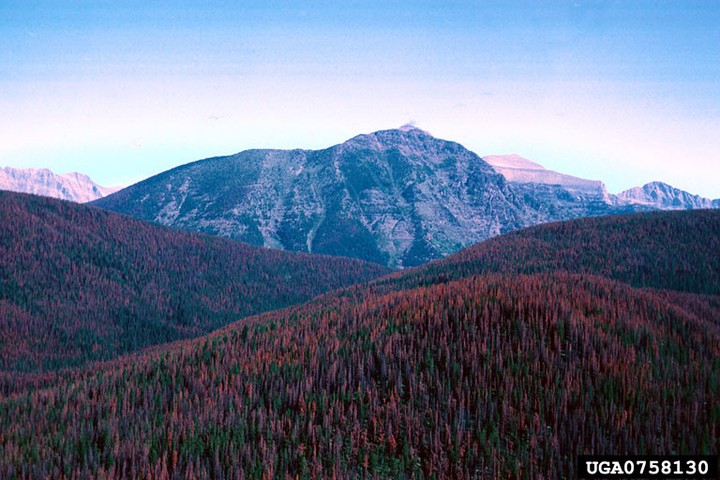Biotic disturbance hotspots
 Photo by William M. Ciesla, Forest Health Management International, Bugwood.org
Photo by William M. Ciesla, Forest Health Management International, Bugwood.org
Globally, biotic forest disturbances caused by herbivorous insects and pathogens have increased, a trend that has been linked to warming and drying climate. With this increase in biotic disturbance activity, an emerging ecological phenomenon has been documented across the western United States (US): biotic disturbance ‘hotspots’, or areas where two or more biotic disturbance agents co-occur in space and time. Biotic disturbance hotspots may have important implications for the resilience of forests in the face of climate change, particularly if they erode mechanisms of post-disturbance forest recovery. However, an exploration of the broad-scale factors associated with these hotspots (e.g., climate, weather, vegetation structure, topography) has not been conducted to date. In this project, we are working to address this knowledge gap by characterizing the spatio-temporal patterns and drivers of biotic disturbance hotspots across three broad forested regions in the western US that span differing gradients of forest types and bioclimatic conditions.